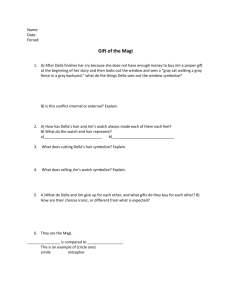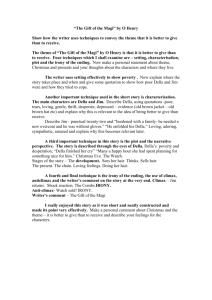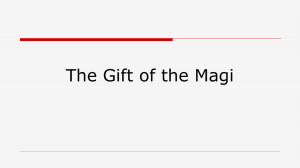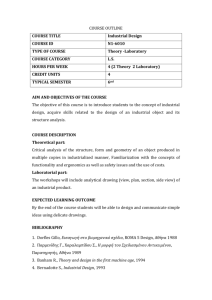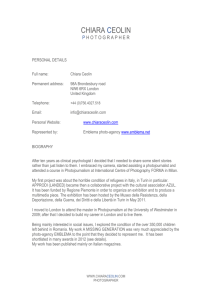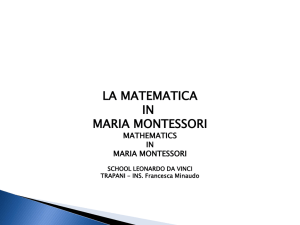Maria Teresa Chialant (University of Salerno, Italy) * mtchialant@unisa
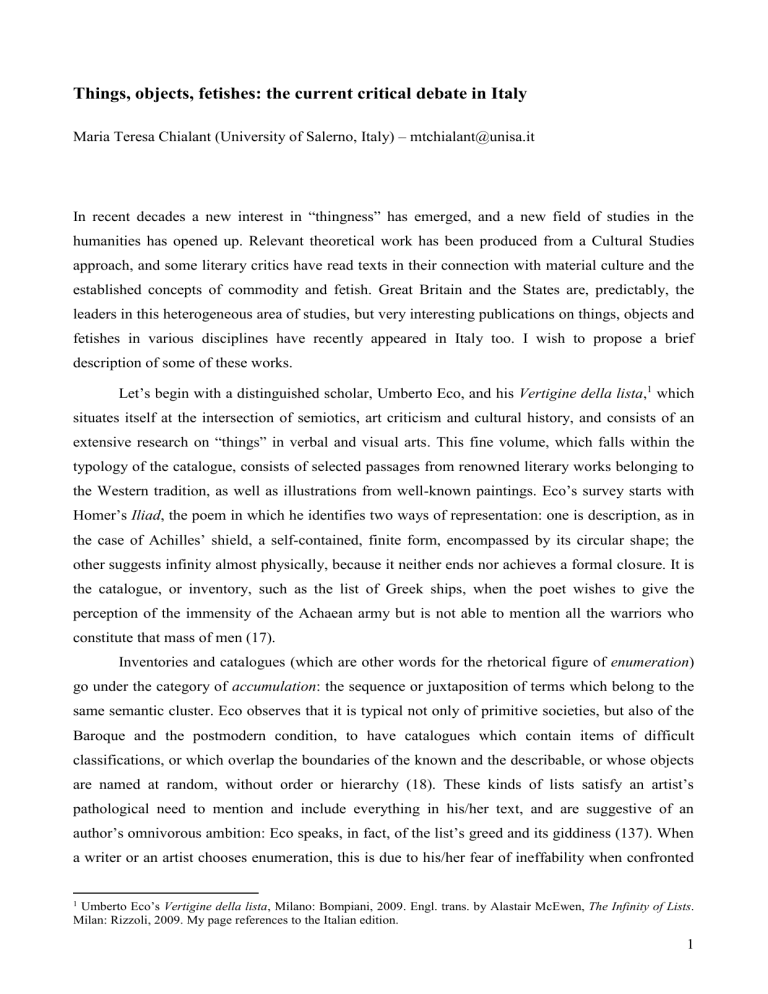
Things, objects, fetishes: the current critical debate in Italy
Maria Teresa Chialant (University of Salerno, Italy) – mtchialant@unisa.it
In recent decades a new interest in “thingness” has emerged, and a new field of studies in the humanities has opened up. Relevant theoretical work has been produced from a Cultural Studies approach, and some literary critics have read texts in their connection with material culture and the established concepts of commodity and fetish. Great Britain and the States are, predictably, the leaders in this heterogeneous area of studies, but very interesting publications on things, objects and fetishes in various disciplines have recently appeared in Italy too. I wish to propose a brief description of some of these works.
Let’s begin with a distinguished scholar, Umberto Eco, and his Vertigine della lista , 1 which situates itself at the intersection of semiotics, art criticism and cultural history, and consists of an extensive research on “things” in verbal and visual arts. This fine volume, which falls within the typology of the catalogue, consists of selected passages from renowned literary works belonging to the Western tradition, as well as illustrations from well-known paintings. Eco’s survey starts with
Homer’s
Iliad , the poem in which he identifies two ways of representation: one is description, as in the case of Achilles’ shield, a self-contained, finite form, encompassed by its circular shape; the other suggests infinity almost physically, because it neither ends nor achieves a formal closure. It is the catalogue, or inventory, such as the list of Greek ships, when the poet wishes to give the perception of the immensity of the Achaean army but is not able to mention all the warriors who constitute that mass of men (17).
Inventories and catalogues (which are other words for the rhetorical figure of enumeration ) go under the category of accumulation : the sequence or juxtaposition of terms which belong to the same semantic cluster. Eco observes that it is typical not only of primitive societies, but also of the
Baroque and the postmodern condition, to have catalogues which contain items of difficult classifications, or which overlap the boundaries of the known and the describable, or whose objects are named at random, without order or hierarchy (18). These kinds of lists satisfy an artist’s pathological need to mention and include everything in his/her text, and are suggestive of an author’s omnivorous ambition: Eco speaks, in fact, of the list’s greed and its giddiness (137). When a writer or an artist chooses enumeration, this is due to his/her fear of ineffability when confronted
1 Umberto Eco’s Vertigine della lista , Milano: Bompiani, 2009. Engl. trans. by Alastair McEwen, The Infinity of Lists .
Milan: Rizzoli, 2009. My page references to the Italian edition.
1
with an infinity of words as well as of things. Examples are brought from such authors as Dickens,
Joyce and Borges.
Eco is not the first critic to discuss the importance and meaning of this device in literature, though.
2
Francesco Orlando, an Italian scholar of French and Comparative literature, has published what can be considered a pioneering book in this area of research: Gli oggetti desueti nelle immagini della letteratura .
3
It is a dense, erudite book in which, adopting both a structuralist and a
Freudian approach, the author explains the appearance in literature, since the late 18 th
century, of catalogues and inventories of obsolete, useless, worn out objects as “the return of the antifunctional
”. Orlando connects the manifestation of objects which oppose the very idea of commodity to the function of literature as the site of resistance to social order. He notes that the rhetorical device holding these objects together is the list, which “does not include abstractions: no situations, conditions, valuations, consideration, or emotions, but rather things in the material sense of the word – physically concrete things presented on the imaginary plane of reality of the various literary works” (
Obsolete Objects 2).
To the semantic area of the inventory applied to literature also belongs the collection of essays edited by Gian Mario Anselmi e Gino Ruozzi Oggetti della letteratura italiana [Objects of
Italian Literature]. The editors point out, in their Introduction, that “[t]wentieth-century culture in
Italy has always been accompanied by a reflection on objects, and has produced – as in the case of
Futurists and Surrealists – significant creative interpretations”.
4
The book focuses on specific meaningful objects, and offers a classification of those which often recur in literary texts, organizing them in alphabetical order: from “Abiti e accessori femminili” [Attire and women’s accessories”] to “Maschera” [Mask], to “Televisore” [Television set]. The aim of this volume is, on the one hand, to look at the social and cultural changes of within a community through the things which inhabit the texts produced in at specific historical moments; on the other, to identify narrative functions and archetypes related to particular objects.
A book with similar aims, but with a wider disciplinary spectrum, is Estetica degli oggetti
[The aesthetics of objects] by the art historian Ernesto L. Francalanci, who, moving from literature to cinema, from architecture to photography and contemporary art, analyses five objects of
2 See Robert E. Belknap, The List : The Uses and Pleasure of Cataloguing.
New Haven: Yale UP, 2004.
3 Francesco Orlando, Gli oggetti desueti nelle immagini della letteratura. Rovine, reliquie, rarità, robaccia, luoghi inabitati e tesori nascosti . Torino: Einaudi, 1994. English transl.: Obsolete Objects in the Literary Imagination. Ruins,
Relics, Rarities, Rubbish, Uninhabited Places, and Hidden Treasures. New Haven: Yale UP, 2006.
4 Gian Mario Anselmi e Gino Ruozzi (a cura di). Oggetti della letteratura italiana. Roma: Carocci, 2008. 7.
2
everyday life – a chair, a table, a door, a window and a veil – in order to identify the responsibility of postmodernism in the transformation of our relationship with reality.
5
A comparative literary approach characterizes, instead, a very recent book by Massimo
Fusillo, Feticci. Letteratura, cinema, arti visive
6
[Fetishes. Literature, cinema, visual arts], which explores – at the intersections of literature, cinema and visual arts – the function and meaning of objects that, being invested with symbolic, affective and emotional values, become fetishes. In the
Preface, the author makes it clear that he does not attribute to the word “fetish” any negative connotation; on the contrary, he wants to rescue it from the bad reputation traditionally attached to it – from anthropology, Marxism and Freudianism alike. Behind this term, there always hides the idea of the inauthentic: the fetish is both something that is worshipped but should not be, the symbolic surrogate of a pristine plenitude which has been lost, and the (morbid) attraction to inanimate matter. Fusillo welcomes the new attitude to fetish that has emerged in recent decades in the areas of Cultural and Gender Studies, and specifically in camp aesthetics and queer criticism, and explains that he has chosen this topic for two main reasons: the existence of an important link between fetishism and artistic creativity, and the scarcity of critical research on the fetish in the area of literary studies and the arts. He maintains that “fetishism always works on details, […] and includes in its microcosm a whole macrocosm of passions and narratives” (9). An interesting remark Fusillo makes in his Introduction is that the object in literature is not only a theme, but also a narrative function, a symbolic element and a multi-purpose textual device. The critic, in his wideranging research, explores the history and typology of the object-fetish: from the object of seduction
(Jason’s embroidered cloak, in the myth of the Golden Fleece
) to the materiality of the object (the painted dishes with images from One Thousand and One Nights in Proust’s À l’ombre des jeunes filles en fleur ), to the object-icon (the ball in the account of a baseball game in Don De Lillo’s
Underworld ).
Fusillo’s book shares some features with Bruno Di Marino’s
Film Oggetto Design. La messa in scena delle cose (Film, Object, Design. The mise en scène
of things],
7
which deals with the centrality of objects in films and the visual arts. The book starts with a reflection on the importance of both banal and special objects in our lives, and most pertinently mentions Baudrillard’s
Le
Système des objets
(1968) with regard to their role in presiding over everyday life. Di Marino quotes Baudrillard, according to whom one of the conditions necessary to the transformation of an
5 Ernesto L. Francalanci, Estetica degli oggetti . Bologna: Il Mulino, 2006.
6 Massimo Fusillo, Feticci. Letteratura, cinema, arti visive, Bologna: Il Mulino, 2012.
7 Bruno Di Marino, Film Oggetto Design. La messa in scena delle cose . Milano: Postmedia, 2011.
3
object tout court into an article of consumption is its becoming a sign, and writes that, more than in real life, “it is within the boundaries of the audiovisual imagination that a process of transformation of the object into a sign takes place” (8). The texts analysed by Di Marino belong to different media; when he looks at an object – either produced by design, or present in a video, or in a film, or in an installation – he always tries to find the reasons why it plays a leading role in that text. The history of cinema, in particular, is full of meaningful objects: from the globe Chaplin/Hitler plays with in The Great Dictator (1940), to the red shoes in the eponymous film (1948), to the telephone in Jean Cocteau’s
La Voix humaine and its film adaptation (the first episode of Rossellini’s
L’amore
, 1948), to the final explosion in Antonioni’s Zabriskie Point .
Besides film directors, artists and writers, Di Marino also mentions intellectuals who have explored things and objects from different perspectives. Among them, the philosopher Remo Bodei, a phenomenologist and one of the leading contemporary maîtres à penser , who has written a fascinating book, La vita delle cose [The life of things].
8
Bodei discusses the philosophical tradition on this topic – from Hegel, Husserl and Merleau-Ponty, through Simmel, Bloch and Heidegger to
Benjamin – and explores the connections between philosophy and art, giving examples of the meaning artists, writers and poets attribute to things: from 17 th
century “still lives”, to Rilke,
Borges, and Neruda. As a philosopher, he draws neat distinctions between objects and things, arguing that when an object transforms itself into a thing, it manifests both the traces of the natural and social processes which have produced it, and ideas, prejudices, tastes and attitudes of a whole society (33).
Bodei’s mention of “traces” allows me to recall a recent book, Documentalità. Perché è necessario lasciar trace [Documentality: Why it is necessary to leave traces] by another philosopher, Maurizio Ferraris, who speaks of “social objects” (different from “natural” or “ideal” objects), which “exist in space and time as dependent on subjects […] and exist only if at least two individuals think that they do”. So, social objects depend on a human subject genetically, but not structurally.
9
Ferraris has recently started a debate with Gianni Vattimo (the philosopher of the socalled “weak thought”), questioning postmodernism itself, and calling for a return to realism in philosophy. He argues that truth lies in facts; and if this is fundamentally a metaphysical thesis,
Ferraris replies that metaphysics looks at the essence of the world: empirical reality itself is coincident with truth. Without even attempting to enter the complex philosophical querelle on postmodernism vs realism, what seems interesting to me in the present context is the fact that
8 Remo Bodei, La vita delle cose. Bari: Laterza, 2009, p. 22.
9 Maurizio Ferraris, Documentalità. Perché è necessario lasciar tracce , Roma-Bari, Laterza, 2009, pp. xii, 44.
4
contemporary cross-disciplinary interest in things and objects is probably part of a reaction to the postmodern wave.
10
10 A further proof can be found in current historical research in Italy. Two titles suffice: Renata Ago, Il gusto delle cose .
Una storia degli oggetti nella Roma del Seicento [A taste for things. A history of objects in 17 th -century Rome] . Roma:
Donzelli, 2006; and the special issue of Genesis. The Journal of the Italian Society of Women’s History.
V/1 (2006) on
Oggett i [Objects], ed. by Sandra Cavallo and Isabelle Chabot.
5
